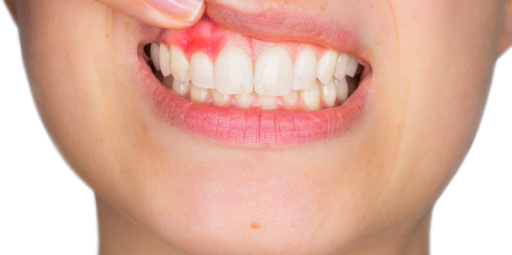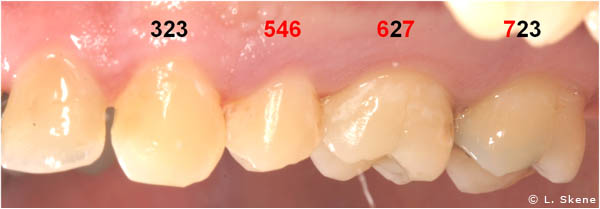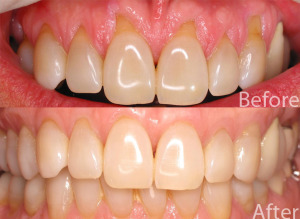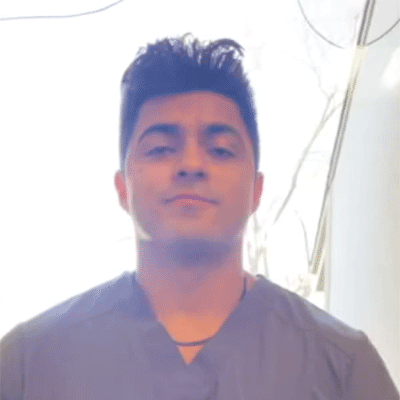OSSEOUS SURGERY
Osseous Surgery
Osseous surgery is an advanced treatment for gum disease. It allows for a more thorough cleaning of the affected areas and promotes the reattachment of healthy gum tissue to the teeth. However, it’s typically reserved for cases where non-surgical treatments haven’t been effective in controlling the disease.
Osseous Surgery SLC and South Jordan
Types of Osseous Surgery
Osseous surgery encompasses several different procedures, each designed to address specific aspects of advanced gum disease (periodontitis). Below are the main types of osseous surgery:
- Open Flap Debridement: This is the most common form of osseous surgery. It involves creating flaps in the gum tissue to access the tooth roots and underlying bone. The goal is to thoroughly clean and remove bacterial deposits, tartar, and diseased tissue from the affected area. After cleaning, the gum flaps are repositioned and sutured back in place to facilitate healing.
- Osseous Resective Surgery: In cases where there is significant bone loss due to gum disease, osseous resective surgery may be performed. This procedure involves removing and reshaping portions of the damaged bone to eliminate irregularities and promote the reattachment of healthy gum tissue to the teeth.
- Guided Tissue Regeneration (GTR): GTR is a specialized osseous surgery technique used to encourage the regeneration of lost bone and periodontal tissue. A barrier membrane is placed between the gum tissue and bone to prevent the gum tissue from invading the healing area. This allows for the regeneration of bone and other supporting structures.
- Bone Grafting: Bone grafting may be incorporated into osseous surgery to replace missing bone in areas affected by severe gum disease. Bone grafts can be obtained from a donor or a bovine bone. The graft material helps promote the growth of new bone in the affected area.
How Much Does Osseous Surgery Cost?
The cost of osseous surgery can vary widely depending on several factors. This might include the severity of the gum disease, the number of teeth involved, and whether dental insurance coverage is available. On average, osseous surgery can range from a few hundred to several thousand dollars per quadrant. It’s important to consult with your dental provider for a specific cost estimate, including any potential insurance coverage or financing options.
Things to Avoid Before Osseous Surgery
- Smoking: If you smoke, it’s highly advisable to quit or significantly reduce smoking before osseous surgery. Smoking can impair the body’s ability to heal, increase the risk of complications, and interfere with the success of the surgery.
- Alcohol and Certain Medications: Consult with your dental professional about any medications you are taking, including over-the-counter drugs, supplements, or herbal remedies. Some medications and substances can interact with anesthesia or affect the surgical procedure. Alcohol consumption should also be minimized or avoided in the days leading up to surgery. You should also avoid alcohol for a few days after the surgery.
- Non-Compliance with Medications: If you’ve been prescribed antibiotics or other medications in preparation for surgery, make sure to take them as directed. These medications are often prescribed to prevent infection and optimize healing.
How to Prepare for Osseous Surgery
- Consultation and Assessment: The first step is to schedule a consultation with a periodontist who specializes in treating gum disease. During this appointment, your oral health will be assessed, and the severity of your gum disease will be determined. X-rays and other diagnostic tests may be performed to evaluate the extent of bone and tissue damage.
- Discuss Treatment Plan: Once the assessment is complete, your healthcare provider will discuss the recommended treatment plan, including osseous surgery if necessary. You should have a clear understanding of the procedure, its goals, and the expected outcomes.
3. Address Medical Conditions: Inform your periodontist about any underlying medical conditions you have, as well as any medications you are taking.
What Happens During
- Anesthesia: The procedure begins with the administration of local anesthesia to ensure that the patient remains comfortable and pain-free throughout the surgery.
- Flap Creation: The periodontist makes small incisions in the gum tissue near the affected teeth to create flaps. These flaps are gently lifted to access the underlying tooth roots and bone.
- Cleaning and Debridement: Once the tooth roots and bone are exposed, the dental professional thoroughly cleans and debrides the area. This involves removing bacterial deposits, tartar, and diseased tissue from the surfaces of the teeth and the surrounding bone. Special instruments are used to smooth irregularities on the bone’s surface to promote better tissue attachment.
- Bone Reshaping (if needed): In cases where there is significant bone loss due to gum disease, the periodontist may reshape or remove damaged bone to encourage proper healing and tissue reattachment.
5. Closure of Flaps: After the cleaning and reshaping procedures are completed, the gum flaps are repositioned and sutured back into place. The sutures help hold the tissue in position and facilitate the healing process.
Post-Operation Recommendations
- Rest: Get plenty of rest during the initial days after surgery to aid in the healing process.
- Swelling and Ice: If there is swelling, apply an ice pack to the outside of your face for short intervals to reduce swelling and discomfort. This should be done for the rest of the day to help with inflammation.
- Follow-up Appointments: Attend all scheduled follow-up appointments with your periodontist to monitor healing and assess the success of the surgery.
- Oral Health Maintenance: Continue to maintain good oral hygiene practices and consider adjustments to your daily oral care routine based on your healthcare provider’s recommendations
Benefits of Osseous Surgery
Here are the main advantages of osseous surgery:
- Disease Control: Osseous surgery is effective in controlling and treating advanced gum disease. It allows for thorough removal of bacterial deposits, tartar, and diseased tissue from the affected areas, promoting healthier gums.
- Pocket Reduction: The surgery reduces the depth of periodontal pockets (spaces between the teeth and gums), which are a common characteristic of gum disease. This reduction makes it easier to maintain good oral hygiene and prevents further bacterial buildup.
- Tissue Regeneration: In some cases, osseous surgery, along with techniques like guided tissue regeneration (GTR) and bone grafting, can stimulate the regeneration of lost bone and periodontal tissue, helping to restore a more stable oral environment.
- Preservation of Teeth: By addressing the underlying causes of gum disease and providing a healthier gum attachment to the teeth, osseous surgery can often save teeth that might otherwise need to be extracted.
- Improved Aesthetics: In addition to its functional benefits, osseous surgery can enhance the appearance of the smile by reducing gum inflammation and reshaping gum tissue.
Side Effects
One of the most common side effects is pain and discomfort after the surgery, which can typically be managed with prescribed pain medications or over-the-counter pain relievers. Swelling of the gums and face is also common post-surgery. Bruising may occur in some cases, typically around the surgical site, and it usually resolves on its own.
How Painful Is It?
Osseous surgery can be moderately painful during the initial recovery period. Patients often experience discomfort, soreness, and mild to moderate pain at the surgical site. The level of pain experienced can vary from person to person, and it tends to improve as the gums and tissues heal in the days following the procedure.
When is Osseous Surgery Needed?
This surgery is typically needed for individuals with advanced gum disease (periodontitis) characterized by deep periodontal pockets, significant bone loss, and tissue detachment from the teeth. Likely candidates include those who have not responded well to non-surgical treatments like scaling and root planing, have severe gum inflammation, and face the risk of tooth loss or complications if the disease is left untreated.
Why Choose Us?
Choosing our practice for osseous surgery and other periodontal treatments means selecting a team of experienced and compassionate professionals dedicated to your oral health. We offer state-of-the-art facilities, personalized treatment plans, and a commitment to delivering the highest standard of care.








